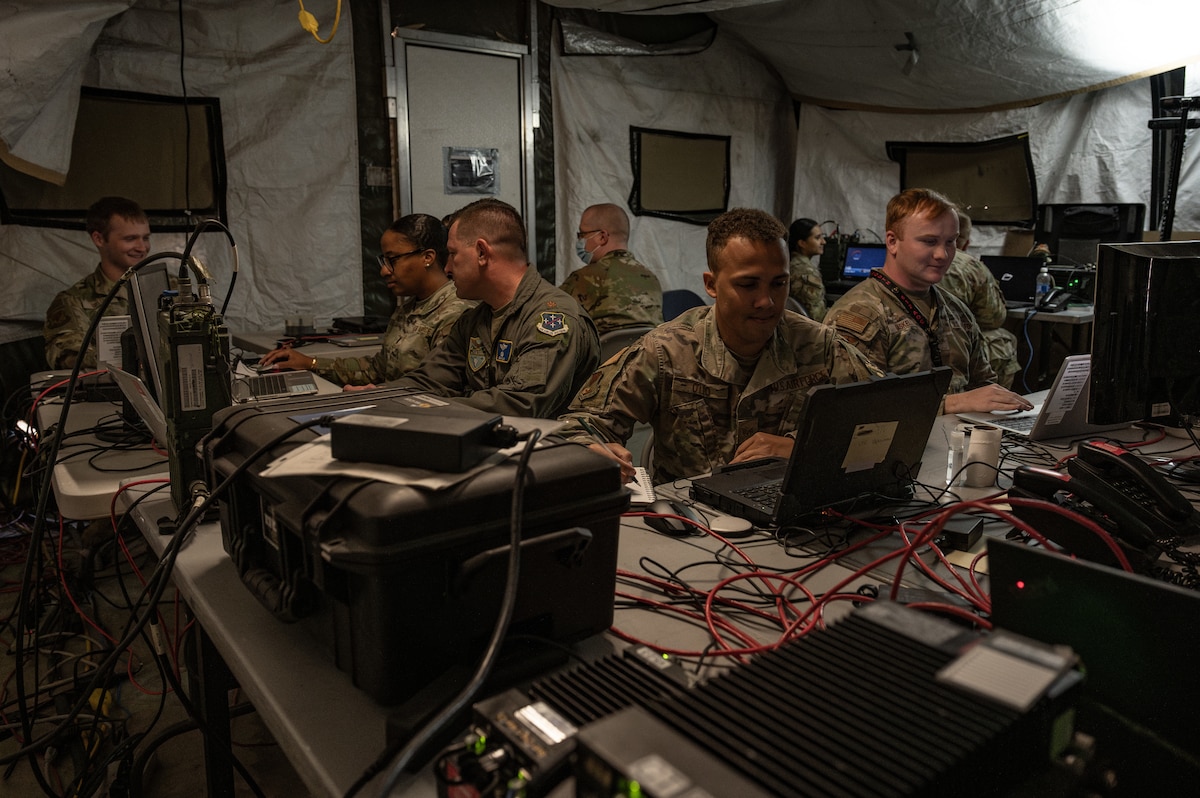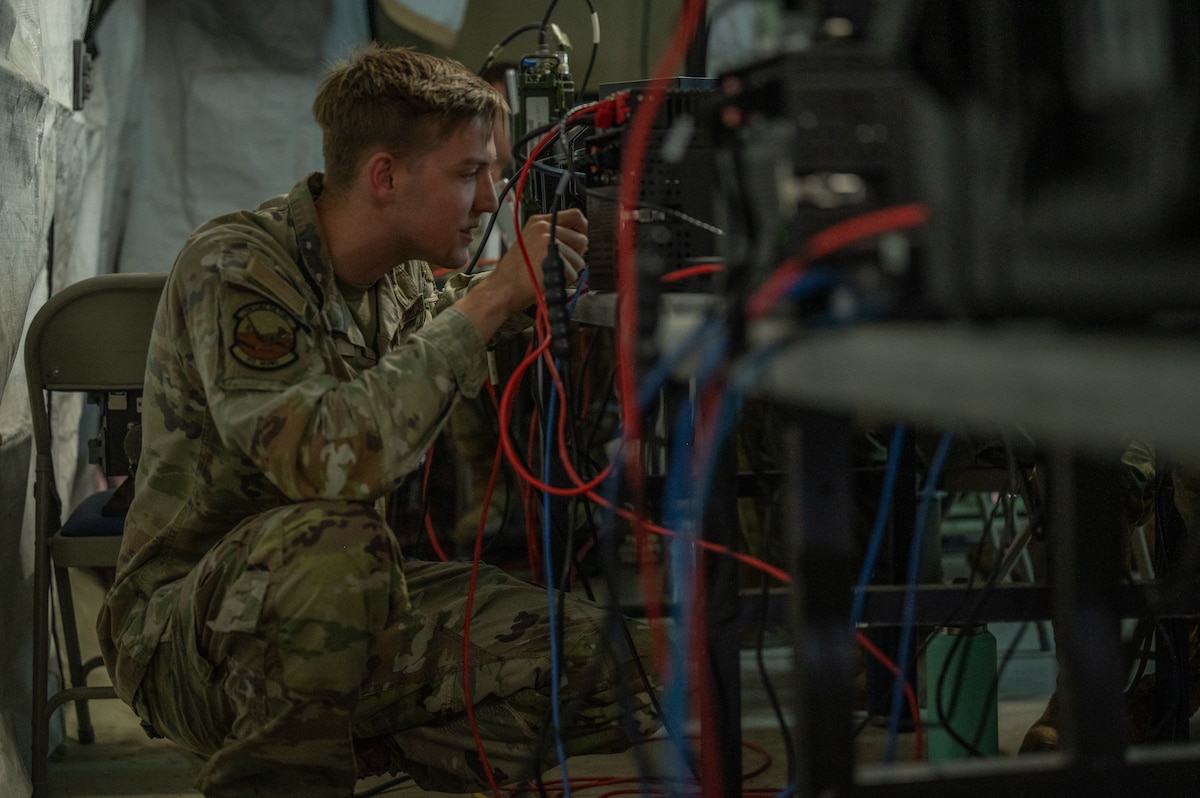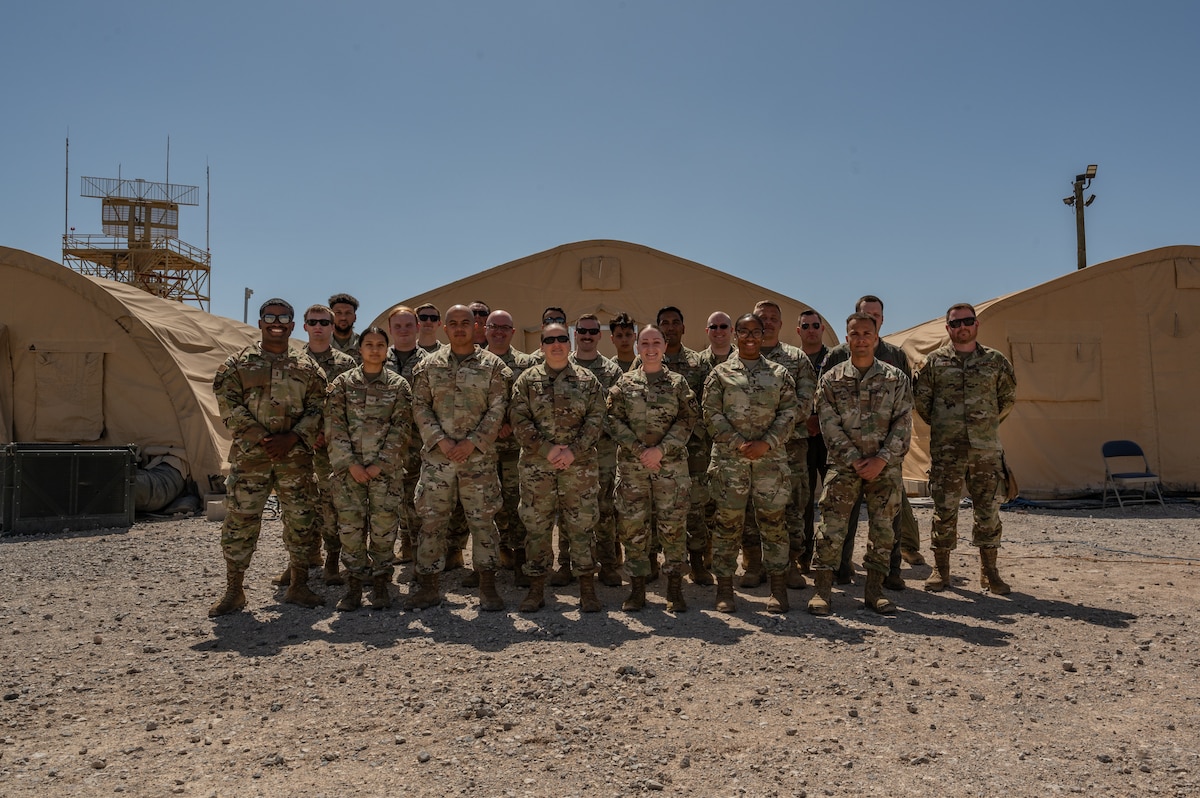Airmen from the 612th Air Operations Center and Air Communications Squadron deployed to Nellis Air Force Base May 5-16 to evaluate a new and innovative approach to operational command and control in the field.
Supported by the Air Force Joint Test Program Office, the test measured the Air Operations Center-Deployable team's mission effectiveness in a simulated deployed environment at the Shadow Operations Center-Nellis.
"The key objective of the field test is to perform basic AOC functions-forward division teams implementing their basic Air Tasking Cycle roles in producing, publishing and executing the Air Tasking Order," explained Lt. Col. Joseph Hernandez, 612 AOC joint data network team chief.
An ATO is the Air Force's daily plan for air operations. Like a playbook, it outlines missions based on input from specialized divisions focused on intelligence, planning, strategy, operations and communications.
"In the event a location of consequence were to lose SATCOM [satellite communications], undersea cables, or terrestrial networks, you lose the ability to reach back," warned Lt. Col. Brandon Koster, 612 ACOMS commander. "One of the ways to solve this problem is to move closer to the fight, bringing the weapon system with you."
Unlike traditional AOCs that operate from fixed, secure facilities, the AOC-D is built to rapidly deploy with commercially transportable equipment that operates on both military and commercial networks.
"This is different from traditional AOC operations in that our deployed teams will not have a parent organization's resources, personnel and troubleshooting expertise within a negligible distance of any issue," Hernandez said.
While the concept of the test was to prove ATOs could be successfully produced in the field, the 612th ACOMS took it one step further.
"This was the first operational test of a commercial facing tactical extension of the Air Force Network on both secure and non-secure platforms," Koster said. "This allowed ACOMS to use any available commercial network path to include, wireless 5G/LTE, Starshield and traditional wired connections to extend the weapon system to the location of need in a secure manner."
According to Koster, the new approach can support up to 600 connections across multiple locations, effectively replacing military satellite communications requirements, providing a redundant and resilient C2 capability where internet access may be limited or denied.
"This test demonstrated that the Air Force would benefit from investing in tactical network extensions for all its existing bases and forward locations," Koster said. "The Air force can maximize its communications resiliency-leveraging commercial networks, ensuring a network access point is always available to Airmen in the field."









